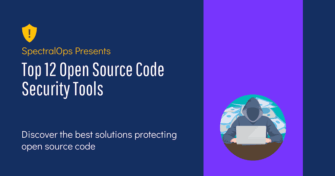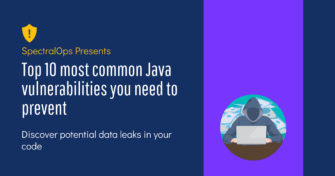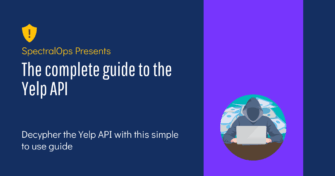Top 12 Open Source Code Security Tools
Open source software is everywhere. From your server to your fitness band. And it’s only becoming more common as over 90% of developers acknowledge using open
What if the very core of your company—the digital ecosystem you painstakingly built—is under attack? If an invisible enemy gets illegal access and begins manipulating data or disrupting essential processes, your entire organization could be paralyzed in an instant. Remote Code Execution (RCE) vulnerabilities have this terrifying reality.
RCEs are the holy grail for hackers, allowing them to run arbitrary commands on a target machine. While less common than other vulnerabilities, its consequences are equally disastrous. A prime example is the infamous Log4j vulnerability of 2021, which allowed attackers to execute arbitrary code on affected systems, leading to widespread exploitation and potential data exfiltration.
Such vulnerabilities can grant attackers complete control over a system, bypassing security boundaries and enabling data theft, ransomware deployment, or even using the compromised host as a launching pad for further attack.

Remote Code Execution occurs when user-controlled input is executed directly as a command by the system, granting an attacker the ability to run arbitrary code.
This vulnerability typically arises when unsanitized inputs are passed to system-level commands.
Reliance on web applications and user-facing APIs increases the risk of RCEs. These interfaces often process large volumes of user-generated data, providing ample opportunities for attackers to exploit poorly secured input paths.
To better understand how RCEs occur, let’s look at some examples.
The following is an example of an insecure Go code that could lead to RCE:
The above function represents a handler that responds to HTTP requests on a given path. If an attacker enters malicious input like rm -rf /, the command is executed directly, with little or no sanitization. This happens when the command is obtained from the requests using. r.URL.Query().Get() is neither checked nor sanitized and is passed straight to the exec.Command() function.
RCE can also occur from memory corruption vulnerabilities like buffer overflows. For instance, attackers can inject and execute shellcode when an application improperly manages memory. This requires more technical sophistication but can similarly grant complete system access.
Sometimes, existing sanitization methods are simply not enough. This was the case with the planet’s most popular container orchestrator, Kubernetes, in CVE-2023-5528, where a user who could create pods and persistent volumes on Windows nodes might escalate to admin privileges. This vulnerability affected Kubernetes clusters using an in-tree storage plugin for Windows nodes.
The offending code snippet looked like this:
In this snippet, the code fails to properly sanitize or restrict the mklinkSource input, allowing a user to craft malicious paths that could be used to create symbolic links pointing to unintended system locations. While this vulnerability didn’t directly lead to RCE, it enabled privilege escalation, granting administrative access to Windows nodes.
Privilege escalation is often a critical step in a chain of attacks that end in RCE. An attacker with admin-level control could manipulate processes, deploy malicious binaries, or exploit other security misconfigurations within the cluster. Once the attacker escalates privileges, executing arbitrary commands becomes significantly easier, leading to full system compromise.
This is a reminder that vulnerabilities often don’t exist in a vacuum. Even if a single bug doesn’t directly result in RCE, it can act as a foothold for attackers to execute a series of chained exploits.
Detecting RCE vulnerabilities requires a combination of proactive code analysis, automated tools, and runtime testing.
Here are some techniques to identify such vulnerabilities:
Developers should look out for one another when reviewing code. By fostering a culture of shared responsibility, developers can spot insecure patterns early, such as unsanitized input passed into system commands or unsafe libraries being used.
SAST tools analyze source code, bytecode, or binaries for vulnerabilities without executing the application. By scanning for known insecure coding patterns, SAST tools can identify areas where user-controlled input might reach critical system functions like exec or os.system. These tools integrate seamlessly into CI/CD pipelines, providing developers with actionable insights and ensuring potential RCE vulnerabilities are caught early in the development lifecycle.
Unlike SAST, DAST tools evaluate a running application by simulating real-world attack scenarios. They interact with the application externally—sending crafted inputs, fuzzing endpoints, and monitoring for signs of code execution. This method is particularly effective for identifying RCE vulnerabilities arising from runtime behaviors or misconfigurations that static analysis might miss.
The easiest vulnerabilities to fix are the ones that don’t exist. For developers, this means prioritizing secure coding practices at every step of the development process and security tools that can catch undesirable inputs in real-time. By building security into the software development lifecycle, you can significantly reduce the risk of RCE vulnerabilities. Here are the top four secure coding practices to adopt:
Whether it’s a file path, URL, or password, time and time again, attackers have proven that user input cannot be trusted. All external inputs should be treated as potentially malicious and validated strictly against known good patterns.
For example, avoid relying on blacklists and instead implement “allow lists” to ensure inputs conform to expected formats. Using libraries or frameworks that support strong input validation can help reduce errors.
Properly encoding outputs ensures that data sent to a browser, shell, or API is treated as plain data rather than executable commands. A common example is URL encoding, where unsafe characters in a URL (like &, ? or %) are encoded to prevent unintended behaviors. For instance:
from urllib.parse import quote unsafe_input = "example.com/page?name=John&role=admin" safe_input = quote(unsafe_input) print(safe_input) # Output: example.com/page%3Fname%3DJohn%26role%3Dadmin
The above uses the quote function from the standard library to encode the unsafe_input, preventing a malicious payload from entering the rest of the system.
Post-exploitation, the principle of least privilege ensures that services only have access to the resources they need, which significantly reduces or, in many cases, isolates a compromised host.
Regular security audits provide a big-picture view of your organization’s overall security posture. They help identify weaknesses that might expose your application to RCE vulnerabilities. Beyond detection, they allow you to refine existing processes and prioritize fixes based on risk.
If you’ve ever been told that your request is blocked after entering a certain character in a search bar or URL, you’ve likely encountered a Web Application Firewall (WAF). WAFs are security tools designed to monitor, filter, and block malicious HTTP traffic before it reaches your application. They inspect incoming requests for suspicious patterns—like special characters, payloads resembling SQL injection, or attempts to execute shell commands.
WAFs are particularly effective at protecting against RCE attacks, where attackers attempt to inject user-controlled input into system-level commands. For instance, WAFs can detect and block common payloads like rm -rf / or attempts to exploit known vulnerabilities in web applications.
While WAFs play a huge role in your defense strategy, they have limitations. Here are some limitations to consider:
Network security remains a priority for defense strategy, with tools like firewalls; here are the top 3 tools to consider tools to consider for defending against RCEs at the network level.
Firewalls have stood the test of time, evolving alongside threats to remain indispensable to any security arsenal. By enforcing strict firewall rules that segment your network, you can limit an attacker’s ability to move to other parts of your network if they breach one part of your system.
With the rise of runtime security, the landscape for Intrusion Prevention Systems has shifted dramatically. Organizations can now move from reactive to proactive protection, preventing vulnerabilities before they are exploited.
When combined with an IPS, intrusion detection systems can create a powerful setup that not only detects threats but actively mitigates them and recognizes attack patterns in the future.
While we can never entirely prevent vulnerabilities, taking a proactive stance reduces the chances that your team is caught off guard. In this post, we explored remote code execution: what it is, how it works, and a vulnerability that could lead to an RCE.
It is important to remember that not all RCEs make the news, and attackers often exploit zero-day vulnerabilities months before they are discovered or reported. With Spectral’s solution, you can promptly integrate RCE detection directly into your pipelines so your developers don’t have to think about them.
Ready to take control of your organization’s risk and reduce it significantly? Protect against the devastating impact of RCE exploits. Discover how Spectral can help you proactively defend against these critical vulnerabilities today.

Open source software is everywhere. From your server to your fitness band. And it’s only becoming more common as over 90% of developers acknowledge using open

It’s easy to think that our code is secure. Vulnerabilities or potential exploits are often the things we think about last. Most of the time, our

Part of the Spectral API Security Series Yelp.com is one of the most influential crowdsourcing sites for businesses. The company is worth just over one billion